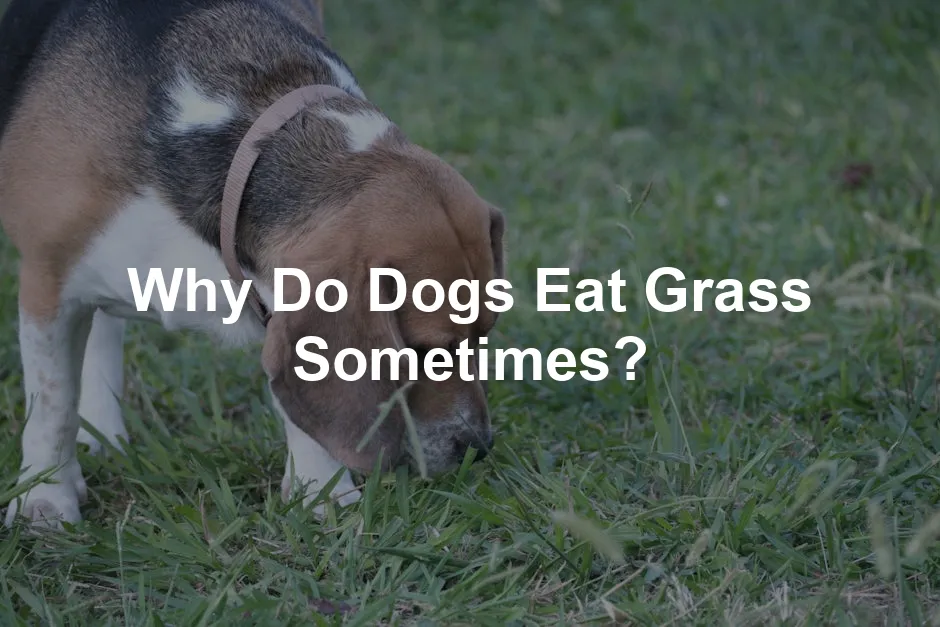
Why Do Dogs Eat Grass Sometimes?
Introduction
You’ve probably seen your dog munching on grass and thought, “What on earth are they doing?” This quirky behavior often puzzles pet owners. Is your furry friend trying to tell you something, or is it just another odd canine quirk? While it can be concerning to witness your dog’s grassy snack, many dogs eat grass for reasons that aren’t linked to illness.
In fact, studies show that a significant number of dogs partake in this behavior regularly, often without any adverse effects. From boredom to dietary needs, the reasons are as varied as the dogs themselves. This post is set to provide you with an in-depth look into why dogs eat grass, the potential risks involved, and some handy tips to help you manage this behavior. Sit tight, and let’s unravel the mystery behind your pup’s green snack!
Understanding the Behavior
Did you know that eating grass is a common habit among our four-legged friends? A survey indicated that nearly 70% of dogs have been observed munching on plants at some point in their lives. This behavior isn’t just limited to house pets; wild canids, like wolves and foxes, also partake in this unusual diet.
Research has shown that about 79% of dogs eat grass at least occasionally, and interestingly, this behavior is more frequently seen in younger dogs. You might wonder if they are trying to self-medicate or if they are simply bored. The truth is, dogs may eat grass for a variety of reasons that have little to do with their health. It’s often instinctual, rooted in their ancestry.
In the wild, canids have been known to consume plant material, sometimes found in the stomachs of their prey. This means that grass-eating could be a natural behavior echoing back to their wild roots. So, whether your dog is a seasoned grass connoisseur or just a curious pup nibbling on the occasional blade, this behavior isn’t as perplexing as it seems. Understanding the reasons behind it can help you determine if you need to take any action or simply let them enjoy their green treat.

Reasons Dogs Eat Grass
Dietary Needs
Dogs, much like humans, sometimes crave a bit of greenery. When they munch on grass, they might be trying to fill a dietary gap. Fiber is a crucial element in a dog’s diet. It helps with digestion and keeps everything running smoothly in the gastrointestinal tract. If a dog lacks sufficient fiber in their meals, they may turn to grass as a natural remedy.
To ensure your dog is getting the right nutrients, consider investing in quality dog food like Blue Buffalo Life Protection Formula. This high-quality dog food is packed with essential nutrients and fiber to keep your furry friend healthy and happy. A balanced diet can truly make a difference in their overall well-being!
Several experts have shared insights on this behavior. A notable case involved a miniature poodle that ate grass daily and vomited afterward. After switching to a high-fiber diet, the grass-eating stopped. This example highlights how dietary deficiencies can influence a dog’s eating habits.
It’s essential for dog owners to ensure their furry friends have a balanced diet, packed with the necessary nutrients. Not meeting these requirements can lead to various health issues. Constipation, diarrhea, and other gastrointestinal problems can arise from a lack of fiber. If you suspect your dog is eating grass due to dietary deficiencies, consult your veterinarian. They can help assess your dog’s nutritional needs and recommend appropriate dietary changes.
Additionally, keep an eye on your dog’s overall health. If your pup seems lethargic or has other concerning symptoms alongside grass-eating, it might be time for a vet visit. Grass munching might be a signal that your dog needs a dietary overhaul. A healthy, well-rounded diet can prevent these grassy cravings and keep your canine companion in top shape.

Instinctual Behavior
Dogs are descendants of wild canids, and their eating habits often reflect those of their ancestors. In the great outdoors, wild dogs would consume a varied diet, which sometimes included the stomach contents of their prey. This often meant they ingested plant material, including grass. This ingrained behavior has persisted through generations.
Research shows that many dogs still retain these instincts. A study found that between 11% and 47% of wolves consume grass regularly. This suggests that grass-eating is not solely a domesticated behavior but rather a remnant of their ancestry. For our dogs, this could mean that when they nibble on grass, they are simply following their natural instincts.
Understanding this instinctual behavior can ease the minds of concerned pet owners. If your dog occasionally grazes on grass, it might just be a nod to their wild roots. As long as they aren’t showing signs of distress or illness, there’s little need for alarm. Letting them indulge in this behavior can be a way for them to connect with their wild heritage.
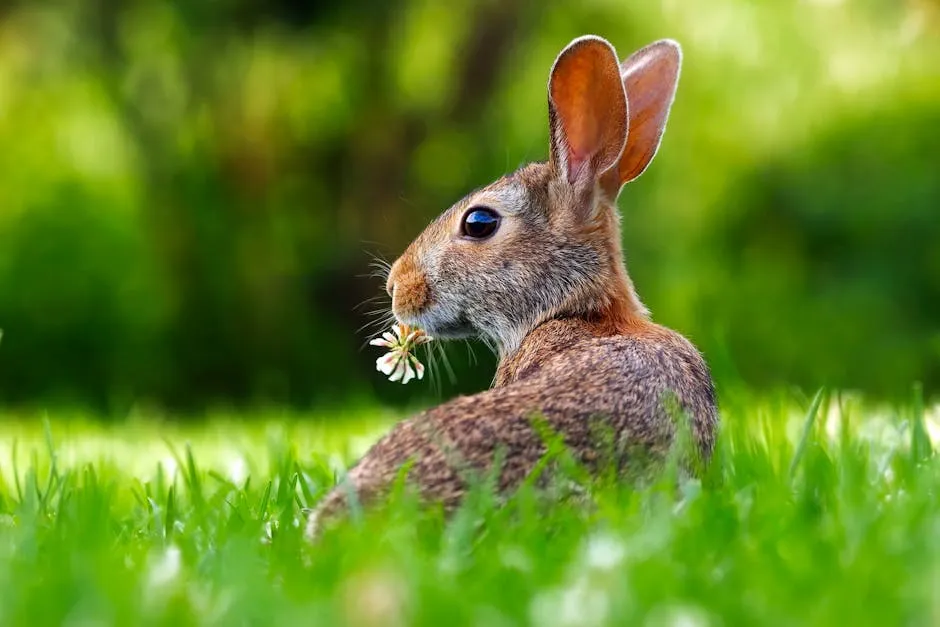
Boredom and Anxiety
Ah, boredom, the silent enemy of our pets! Dogs, especially those left alone for long stretches, can turn to grass-eating as a way to entertain themselves. Much like humans stress-eat or bite their nails, dogs might munch on grass to cope with boredom or anxiety. This behavior can become a habit, especially if they find it rewarding—maybe they get attention from you or simply enjoy the act itself.
If you notice your dog indulging in grass more often during quiet periods, it might indicate they need more mental and physical stimulation. Regular walks, playtime, and engaging toys can keep your pup occupied and reduce their inclination to munch on grass. Consider introducing puzzle toys like the Outward Hound Hide-A-Squirrel Puzzle Toy for extra fun and mental stimulation!
Providing a structured routine filled with exercise can help alleviate boredom. Schedule regular play sessions and let your dog explore new environments. This can curb their tendency to eat grass out of sheer lack of activity.
If you suspect anxiety is a factor, it’s worth exploring calming techniques. These could involve creating a safe space for your dog or using calming products designed for anxious pets, like the ThunderShirt Classic Dog Anxiety Jacket. By addressing boredom and anxiety, you can help your dog feel more secure and less inclined to snack on grass out of frustration.
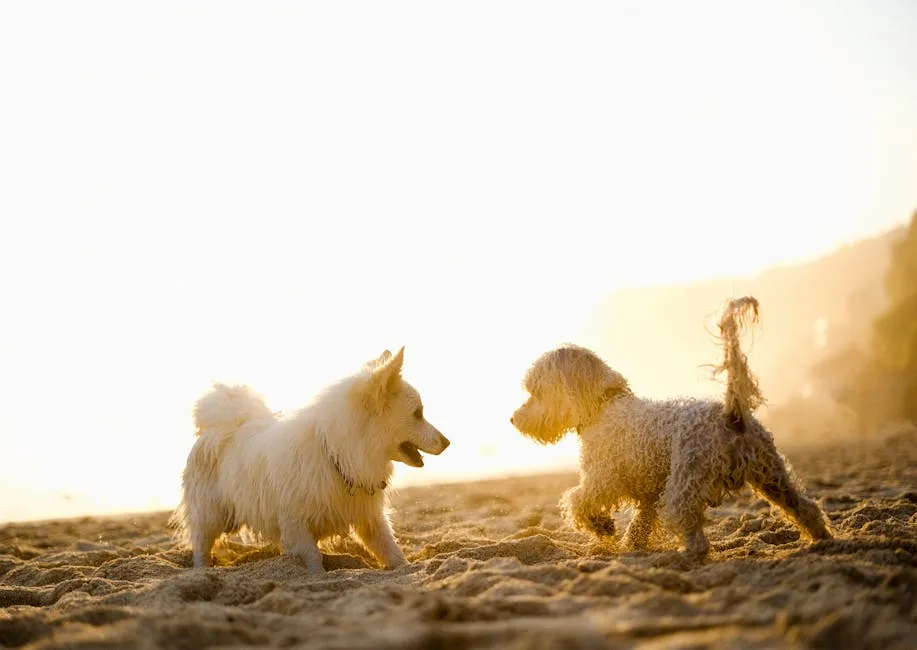
Taste and Texture
Let’s face it: dogs can be picky eaters! While they may devour their kibble, some pups are drawn to the allure of fresh grass. Why? The taste and texture of grass can be downright delightful for our four-legged friends. Take a moment to consider how spring grass feels—soft, tender, and oh-so-green. It’s like a doggy salad bar in their backyard!
Many pet owners have shared amusing anecdotes about their dogs’ grass preferences. For instance, one owner recalled watching her Labrador, Charlie, trot into the yard and immediately make a beeline for the lushest patch of grass. He’d munch away happily, as if he were a connoisseur savoring the finest delicacies. Another owner described her beagle, Daisy, who would only eat grass after a rainstorm, claiming that it “tasted better” when it was wet. Who knew dogs could be such food critics?
But it’s not just about the flavor. The texture of grass can provide dogs with a satisfying crunch, similar to how we enjoy a crisp apple. Some dogs might even enjoy the sensation of chewing on something fibrous, which can help to clean their teeth. It’s like nature’s toothbrush!
Interestingly, the preference for grass can vary between seasons. Fresh spring grass? A dog’s paradise! In contrast, the dry, brown grass of late summer might not hold the same appeal. This seasonal shift suggests that dogs might have a keen sense of taste and texture, allowing them to choose the best bites throughout the year.
So, if you catch your pup nibbling on grass, don’t panic! They may just be indulging in a tasty treat. As long as your furry friend isn’t munching on chemically treated lawns or harmful plants, let them enjoy their green snack. After all, who wouldn’t want to partake in nature’s buffet every once in a while?
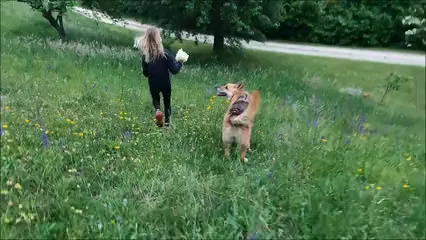
Health Concerns Related to Grass Eating
While occasional grass munching can seem harmless, it’s crucial to understand when it might raise a red flag. If your dog turns into a grass-grazing machine, particularly if they’re consuming excessive amounts, it could be a sign of underlying health problems. Persistent vomiting following grass consumption is another cause for concern.
When dogs eat grass, they sometimes do so to induce vomiting. This behavior might stem from an upset stomach or discomfort. However, research indicates that fewer than 10% of dogs show signs of illness before grazing, and only a quarter of them vomit afterward. In most cases, grass-eating doesn’t lead to vomiting, so if your pup is frequently sick after a grass buffet, it’s time to consult your veterinarian.
Beyond the immediate health concerns, there are risks associated with the grass itself. Many lawns are treated with pesticides or herbicides, which can be toxic to dogs. If your dog consumes grass that has been chemically treated, they could experience symptoms ranging from nausea and vomiting to more serious health issues. Keep an eye out for signs of distress after a grass snack.
Additionally, grass can harbor parasites from fecal matter. If your dog is munching on grass in public spaces or areas frequented by other animals, they might be at risk of ingesting harmful parasites. Regular veterinary check-ups and maintaining a deworming schedule can help protect your pup from these hidden dangers.
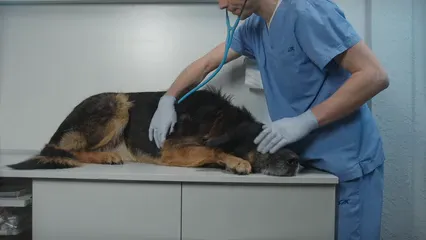
If your dog’s grass-eating habits raise concerns, consider keeping a close watch on their behavior. Are they eating more grass than usual? Are they showing signs of discomfort, lethargy, or a change in appetite? If anything seems off, don’t hesitate to reach out to your vet for guidance. It’s always better to be safe than sorry when it comes to your furry friend’s health.
When to Consult a Veterinarian
Monitoring your dog’s grass-eating habits is vital for their well-being. If you notice excessive grass consumption, it might indicate deeper issues. Keep an eye out for symptoms such as vomiting, diarrhea, or lethargy. If your dog displays any of these signs, it’s time to book a vet appointment.
Additionally, if your dog begins to eat grass after a period of not doing so, pay attention. Sudden changes in behavior can indicate underlying health problems. Enlist the help of your veterinarian to determine if your pup’s grass fixation is a symptom of a more serious condition.
Watch for behavior changes. Is your dog less energetic, or are they showing a decreased appetite? These could be signs of illness. If your dog exhibits any unusual behavior or continues to eat grass obsessively, a vet’s visit is in order. They can perform a thorough examination to rule out any gastrointestinal issues or dietary deficiencies.
Finally, don’t forget to mention any grass-eating habits during your regular vet check-ups. This information can help your veterinarian assess your dog’s overall health. They may recommend dietary adjustments or other interventions to ensure your pup stays healthy and happy.
In the end, a little grass here and there isn’t typically harmful for dogs. However, keeping a close watch on their behavior and well-being can provide peace of mind. After all, you know your dog best, so trust your instincts when it comes to their health!

Managing and Redirecting Grass Eating
If your dog has taken a liking to munching on grass, you might be wondering how to manage this behavior. While it’s often harmless, some pet owners prefer to discourage it. Here are some practical tips to help redirect your dog’s grass-grazing habits.
First, let’s talk about exercise. Dogs thrive on physical activity. Increasing their daily exercise can reduce boredom and lower the chances of them nibbling on grass. Take them for longer walks or engage in more vigorous play sessions. Fetch, tug-of-war, or even agility training can provide the mental and physical stimulation they crave. A tired dog is less likely to seek out grass as a plaything.
Next up, consider offering alternative chew options. Dogs have a natural urge to chew, and providing safe and engaging chew toys can satisfy this instinct. Look for durable toys that are designed for chewing, like the KONG Classic Dog Toy. These come in various shapes and textures, ensuring your dog has something fun to gnaw on instead of your lawn. You might also try providing dog-safe chews, like bully sticks or dental chews, which can keep them occupied and promote healthy teeth.
Another effective strategy is behavior modification. Teaching your dog commands can make a big difference. Start with simple commands like “leave it” or “come.” Use treats and positive reinforcement to reward compliance. If your dog approaches grass, command them to “leave it” and reward them when they obey. This helps create a clear understanding that grass is off-limits, while they can enjoy their treats instead.
You can also redirect their attention when they begin to munch on grass. Carry treats during walks. When you see your dog heading for the grass, use a cheerful voice to call them back and reward them with a treat. This approach not only distracts them from the grass but also reinforces good behavior. Consistency is key!

Lastly, consider creating a designated play area in your yard. If it’s safe from harmful chemicals and free from temptations, your dog can enjoy the outdoors without the risk of eating grass. Place their toys and favorite activities in this zone to encourage playtime away from the grass.
By implementing these strategies, you can help manage your dog’s grass-eating habits effectively. With a little patience and creativity, you can ensure your furry friend stays happy, healthy, and grass-free!
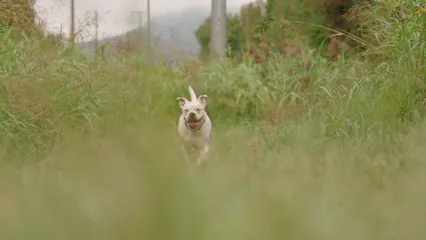
Creating a Safe Outdoor Environment
Ensuring a safe outdoor environment for your dog is crucial, especially if they have a tendency to eat grass. Here’s how to make sure the grass they have access to is free from harmful chemicals and safe for consumption.
First, be vigilant about lawn care products. Many homeowners use pesticides, herbicides, and fertilizers that can be toxic to dogs. Always check product labels and consider using pet-safe alternatives. If you must treat your lawn, keep your dog indoors until the area is completely dry. It’s best to avoid using any chemicals that could pose a risk to your furry friend.
Regularly inspect your yard for potential hazards. Look for any plants that might be toxic to dogs, such as azaleas, lilies, or certain types of ivy. The ASPCA has a comprehensive list of toxic and non-toxic plants that can help you identify what to avoid. If you have any doubts about a particular plant, it’s better to remove it.
Regular vet check-ups are also essential. Your veterinarian can monitor your dog’s overall health and provide guidance on nutritional needs. If your dog is prone to eating grass, discussing their diet with your vet can help you identify any deficiencies. A well-balanced diet can improve their health and potentially reduce their grass-eating tendencies.
Don’t forget about parasite prevention. Grass can harbor parasites that may affect your dog’s health. Ensure your pup is up-to-date on their flea and tick prevention, and consider regular deworming treatments. A healthy dog is far less likely to seek out grass for relief.
By following these guidelines, you can create a safe outdoor environment for your dog. This will allow them to enjoy their time outside while minimizing the risks associated with grass consumption. Keeping your furry friend safe and healthy should always be a top priority!
Conclusion
In summary, grass eating in dogs is a common behavior that often puzzles pet owners. Throughout this article, we explored various reasons why dogs indulge in this green snack. From fulfilling dietary needs to instinctual behavior, boredom, or simply enjoying the taste, there’s a lot more to it than meets the eye.
Most importantly, while munching on grass is usually harmless, it’s crucial for pet owners to remain vigilant. Pay attention to your dog’s overall health and behavior. If you notice excessive grass consumption, vomiting, or other unusual symptoms, it’s wise to consult your veterinarian. They can provide valuable insights and help determine if any underlying health issues are at play. So, let your furry friend enjoy their occasional grassy treat, but keep a watchful eye to ensure their well-being.
FAQs
Is it okay for my dog to eat grass occasionally?
Yes, occasional grass consumption is generally harmless. Many dogs enjoy nibbling on grass, and unless they’re eating from chemically treated areas, there’s usually no cause for concern.
Why do dogs eat grass and then throw up?
Some dogs eat grass as a way to soothe an upset stomach. In certain cases, it may induce vomiting. However, not all dogs that eat grass will vomit afterward. Research shows that fewer than 25% of dogs vomit regularly after grazing.
Can eating grass be harmful?
While grass itself is not harmful, it’s essential to monitor where your dog is eating. Grass treated with pesticides or herbicides can pose serious risks. Additionally, dogs can ingest parasites if the grass is contaminated. Regular vet check-ups and parasite prevention are crucial.
What should I do if my dog eats grass excessively?
If your dog shows a pattern of excessive grass eating, it’s important to consult your veterinarian. They can assess your dog’s diet and overall health. Increasing exercise and providing mental stimulation can also help reduce boredom-related grass munching.
What are some alternatives to grass for dogs that like to chew?
If your dog enjoys chewing, consider providing safe alternatives such as dog-safe chew toys, raw carrots, or specially designed dental chews. These options can satisfy their chewing instinct while promoting good dental health.
Please let us know what you think about our content by leaving a comment down below!
Thank you for reading till here 🙂
All images from Pexels




